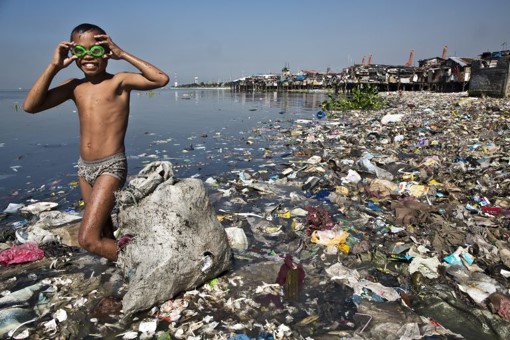Eco-Labels and Consumer Trust: Why Some Certifications Don’t Work and What to Look For
In today’s world of green marketing, eco-labels are everywhere — on coffee cups, shampoo bottles, fashion brands, and even airline tickets. They promise sustainability, ethical sourcing, and environmental responsibility. Yet, beneath the surface of these reassuring symbols lies a complex web of certification systems, misleading claims, and varying degrees of accountability. The paradox is clear: while eco-labels were designed to build consumer trust, in many cases, they have become a source of confusion and skepticism.
The Rise of Eco-Labels and the Promise of Transparency
Eco-labels first gained traction in the late 20th century, coinciding with the global environmental movement and growing awareness of consumer responsibility. Organizations like the Forest Stewardship Council (FSC) and Energy Star established recognizable standards that helped buyers make environmentally informed choices. These certifications served as a bridge between corporations and consumers, signaling compliance with sustainability principles such as reduced carbon footprints, ethical labor, or responsible sourcing of materials.
The rise of eco-labels also reflected a shift in consumer psychology. Surveys consistently show that people want to make ethical choices — even if it means paying more. In response, companies raced to obtain certifications or, in some cases, to design their own. By 2025, there are over 450 recognized eco-labels worldwide, spanning industries from agriculture and textiles to electronics and finance.
However, the explosion of eco-labeling brought with it a serious problem: inconsistency and dilution of meaning. Not all certifications are equal, and not all “green” claims are based on science.
When Good Intentions Go Wrong: Greenwashing and Misleading Labels
“Greenwashing” — the act of making false or exaggerated environmental claims — has become one of the defining issues of sustainable marketing. Some companies exploit vague or unregulated eco-labels to appear eco-friendly without changing their practices. For instance, phrases like “eco-friendly,” “biodegradable,” or “natural” often lack legal definitions and can be used freely. A product might feature a leafy logo and earthy packaging, but behind the branding lies minimal or no actual environmental benefit.
A well-known example occurred in the fashion industry when several fast-fashion brands launched “sustainable” collections made from recycled polyester — while the majority of their production continued to rely on resource-intensive, low-wage manufacturing. Similarly, certain “organic” food certifications allow for pesticides or chemical fertilizers that would surprise the average consumer.
The credibility problem deepens when labels are self-declared — designed and awarded by the companies themselves rather than independent authorities. Without third-party verification, these labels act more as marketing tools than as genuine indicators of sustainability. The result is what researchers call “label fatigue”: consumers are overwhelmed by the number of logos and skeptical about their authenticity.
Evaluating Trust: How Reliable Are Eco-Certifications?
Not all eco-labels are misleading. Some certifications maintain strict, science-based standards and transparent audit systems. To assess reliability, experts suggest evaluating several criteria, summarized in the table below:
| Criterion | What It Means | Examples of Reliable Labels |
|---|---|---|
| Third-Party Verification | Certification is issued by an independent body, not the manufacturer. | FSC (Forest Stewardship Council), Fairtrade, LEED |
| Transparency of Standards | Criteria for certification are publicly available and based on measurable data. | Energy Star, Cradle to Cradle Certified |
| Lifecycle Assessment (LCA) | The entire product life — from raw materials to disposal — is evaluated. | EU Ecolabel, Nordic Swan |
| Regular Audits | Companies are periodically reviewed to ensure ongoing compliance. | GOTS (Global Organic Textile Standard), Rainforest Alliance |
| Social and Environmental Balance | The certification considers both ecological and human factors. | Fair Trade, B-Corp Certification |
Strong certifications combine these elements to create a comprehensive, credible picture of sustainability. In contrast, weak labels often focus narrowly on one aspect — such as recyclable packaging — while ignoring the overall environmental cost of production or distribution.
Building Consumer Awareness: What to Look For
Consumers play a crucial role in holding companies accountable. To make informed choices, one must look beyond the marketing language and focus on evidence-based transparency. Here are some strategies:
-
Check the Certifier – Always look up the organization behind the label. Reliable certifiers provide public databases and detailed criteria.
-
Be Wary of Self-Made Logos – If a product’s eco-label doesn’t correspond to a known certification body, treat it with skepticism.
-
Read Between the Words – Phrases like “eco,” “green,” “planet-safe,” or “environmentally conscious” are not proof of certification.
-
Evaluate the Product Lifecycle – Even a recyclable product can have a huge carbon footprint if made from unsustainable materials or shipped across continents.
-
Follow Independent Reviews and Reports – NGOs and watchdog organizations regularly publish assessments of eco-labels and their reliability.
This consumer awareness is essential because the global sustainability market increasingly depends on trust. Once trust is broken, even genuinely responsible companies face doubt. Therefore, literacy in sustainability language is as crucial as digital or financial literacy in the 21st century.
The Ethics of Certification: Responsibility Beyond Marketing
The eco-labeling industry itself faces ethical challenges. Certification bodies must navigate between maintaining high standards and staying financially viable — since companies often pay fees for evaluation and renewal. This creates potential conflicts of interest: a certifier may be tempted to lower requirements to attract more participants.
Moreover, sustainability cannot be simplified into a single logo. For example, a Fairtrade coffee might ensure ethical wages but come from halfway across the world, contributing to transportation emissions. Conversely, a locally produced product might lack certification yet still follow sustainable practices. This illustrates a broader truth: sustainability is multidimensional, and no label can capture it entirely.
Some experts propose developing meta-labels — systems that evaluate and rank existing certifications based on their rigor and transparency. The Ecolabel Index, for example, is an online directory that rates over 400 eco-labels worldwide, helping both consumers and businesses navigate the complex landscape. Such tools could restore trust by clarifying which certifications genuinely drive environmental change.
Toward a Culture of Genuine Sustainability
Ultimately, eco-labels are not the enemy; misuse and misunderstanding are. When implemented correctly, they can inspire positive transformation by aligning market incentives with ethical responsibility. But they must evolve alongside technology, science, and social expectations. Artificial intelligence and blockchain, for example, already offer ways to trace supply chains in real time, ensuring that certified products actually meet sustainability criteria.
At the same time, education remains key. Schools, media, and influencers must teach audiences how to interpret sustainability claims critically. A well-informed consumer base pushes companies toward real accountability, transforming eco-labels from decorative symbols into instruments of measurable progress.
Conclusion: Reading Beyond the Green
Eco-labels were meant to make sustainability simple. Ironically, they have made it more complex — but also more urgent to understand. In an age where everything from a T-shirt to a tech gadget can claim to be “green,” discernment is power. The responsibility lies not only with companies and certifiers but also with each of us as consumers.
The next time you see a “planet-friendly” sticker, pause before buying. Ask: Who certified it? What does it guarantee? And most importantly — is it making the world greener, or just seem greener?
Only when these questions become habitual will eco-labels truly fulfill their purpose — not as marketing embellishments, but as genuine symbols of trust between people and the planet.





